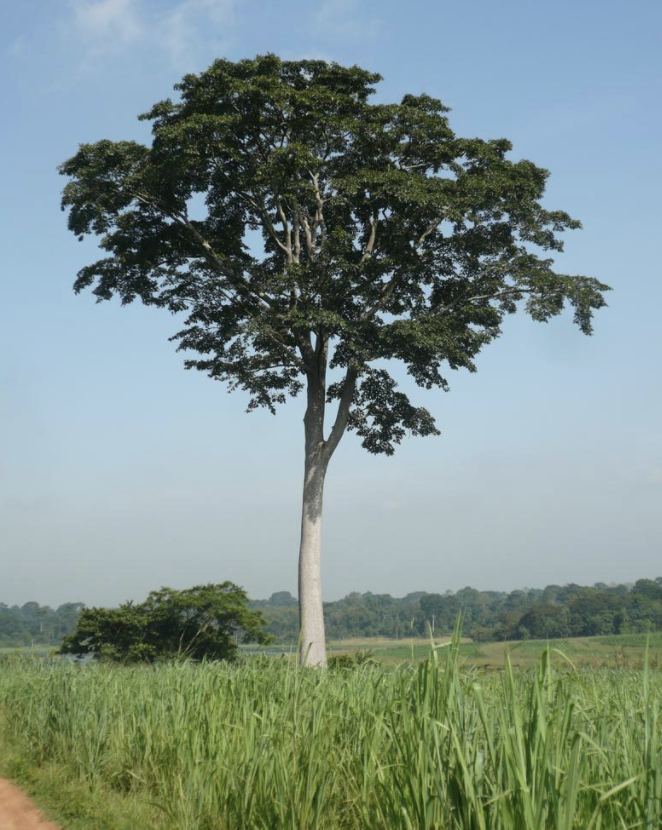| Scientific name | Milicia excelsa |
| Synonyms | Muvule / African Teak |
| Native distribution | West, Central and East Africa |
| Biology | The tree can grow up to a height of 30-50m and it is a large deciduous species. The trunk is bare lower down with the first branch usually at least 20m above the ground. It has a thick bark, pale ash grey to nearly black and brown, usually fairly rough and flaking off in small scales. |
| Ecology | It is a medium growing wood species. The flowering often occurs in January and February, but it takes place at a range of different times soon after the time when most of the leaves fall or shortly before the new leaves appear. Male and female flowers are found on separate trees. |
| Habitat | The species is a secondary tree of wet savannah, rainforest, riverine, groundwater and low altitude evergreen forests. The tree can tolerate a dry season of up to 6 months and can grow in areas with mean annual rainfall as low as 700mm provided it has access to extra water from a perennial stream or underground source. It does not tolerate waterlogging. |
| Wood | The species is one of the most popular timber species in East Africa. The wood is an attractive brown colour, which gets darker on exposure and with oiling. It has a hard, dark heartwood which is durable on the ground, works easily, and is heavy, strong, open grained and resistant to termites. It is mainly used for outdoor construction work, furniture, boats, cabinet work, panelling, frames and floors. |
| NTFPs | It has an umbrella shape with a few thick branches in the crown all fairly horizontal. The fruits are eaten by squirrels, bats and birds, which then disperse the seeds in their droppings. |
| Services | This species is widely used in African traditional medicine. |
| Other information | Very well accepted and available in the Timber trade, high demand. |
